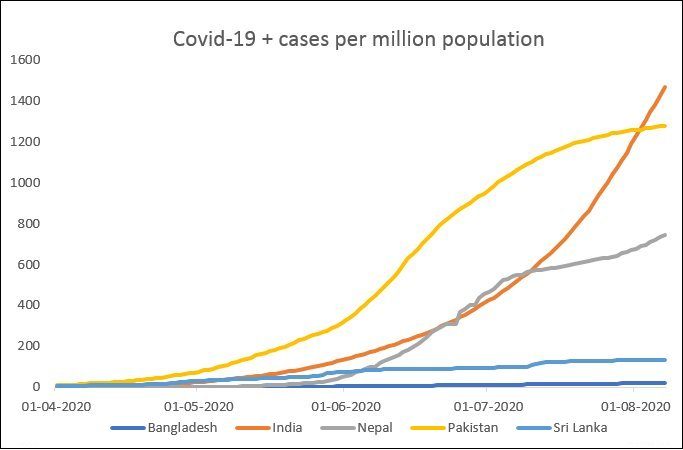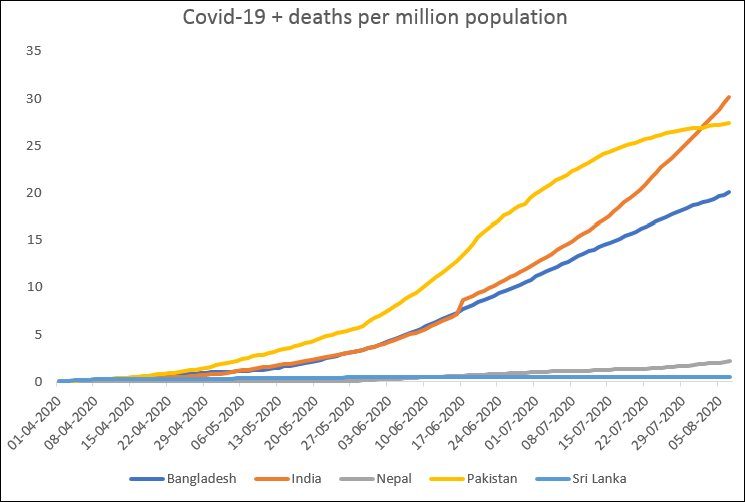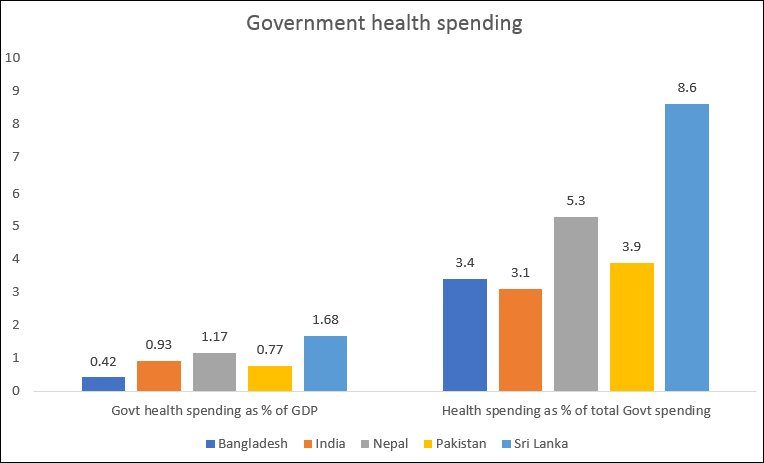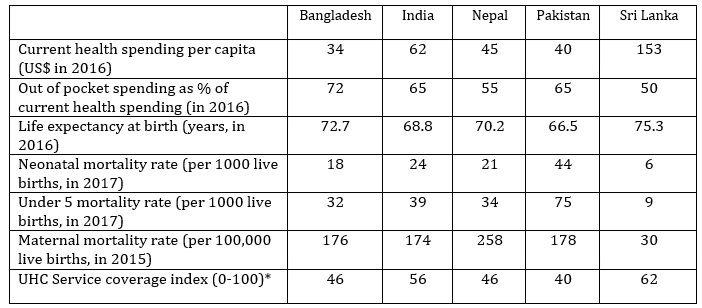John Stuart Mill was among the foremost liberal thinkers of modern times who wrote extensively…
Covid-19: Why is India doing worse than other South Asian countries? C. P. Chandraskhar and Jayati Ghosh
Now that India has already overtaken Brazil among countries with the most number of Covid-19 positive cases and is on the verge of even beating the USA, it’s worth trying to understand what has led to this inability to control the pandemic in India. One of the arguments often made is that India, being a developing country with a large poor population engaged in informal work, the standard containment measures are less likely to work. The state also has fewer resources, both financial and real (in terms of health infrastructure and health workers), to combat the disease.
All this is true, but then what explains the fact that India’s performance with regard to dealing with the disease has been so much worse than other South Asian countries, most of which share similar characteristics? Figures 1 and 2 show how India has now become the worst among five major South Asian countries, in terms of both Covid-19 positive cases and deaths attributed to the disease, relative to total population. (There are known problems of undercounting both cases and deaths in India, but these are set aside for the moment, especially as such factors could also be operating in the other countries.)
Figure 1: India may soon have the most Covid-positive cases per population

Source: https://ourworldindata.org/coronavirus, accessed on 8 August 2020
What is striking is how sharp the recent increase in the incidence of the disease has been in India, even compared to other South Asian countries. Pakistan and Bangladesh both showed higher rates per population until the end of July; thereafter, Indian has overtaken Pakistan and is on course to exceed Bangladesh in the next few days, because of the much steeper slope of its curve. By contrast, Sri Lanka has shown impressive ability to control the disease, with almost no increase in spread since the end of July.
A similar trajectory is playing out with respect to Covid-19 related deaths, where India now has the highest (worst) ratio to population. The sharp increase in recent weeks suggests that the disparity between India and other South Asian countries is likely to increase. Once again, Sri Lanka has managed to stabilise the ratio of deaths from this disease to population, while Nepal also shows relatively low figures.
Figure 2: India now has the highest number of deaths per population

Source: https://ourworldindata.org/coronavirus, accessed on 8 August 2020
What explains this shocking relative performance of India? After all, the country sees itself as the dominant player in the region, both economically and politically. Only Sri Lanka has significantly higher per capita income; Bangladesh and Nepal are still classified as Least Developed Countries and Pakistan has been facing enormous economic challenges, requiring it to approach the IMF for relief.
Much of the answer must refer to the nature of the Indian government response to the pandemic, which may eventually serve as a textbook case of what not to do. A draconian national lockdown announced with only four hours’ notice only delayed the spread of the disease, since it was not accompanied by the rigorous regime of testing, tracing, isolation and speedy treatment required; nor was the time used to prepare sufficiently in terms of health infrastructure and personnel. Because the government provided so little in terms of compensation for incomes lost and social protection, hundreds of millions of people lost livelihood and faced destitution and hunger. Migrants who were forced to subsist without incomes in congested urban areas eventually sought to go home, in poorly planned and terrible conditions that encouraged the spread of the disease across the country, including places with poor medical facilities. And so on.
While Bangladesh, Nepal and Pakistan also implemented versions of this strategy, the lockdowns were not as severely implemented, and all of them gave the people longer notice to prepare. But more significantly, India also entered the pandemic with a disadvantage, because of the long history of low public spending on health, as indicated by the levels just before the pandemic. Figure 3 shows that India’s health spending as a proportion of total government expenditures is the lowest of these five nations.
Figure 3: The Indian government spends proportionately less on health

Source: WHO World Health Statistics 2018 and 2019.
Nevertheless, Table 1 shows that per capita health spending in India is higher than in Bangladesh, Pakistan and Nepal (although much less than half of Sri Lanka), because around two-thirds of it is out-of-pocket spending by households, and this is where higher per capita incomes makes a difference. Despite this, standard health indicators like life expectancy and child mortality are worse than Bangladesh and Nepal—and of course the contrast with Sri Lanka is stark.
Table 1: Some health indicators for South Asian countries

* The UHC Service coverage index tracks coverage of universal health care services,
as an index from 0 to 100,computed as the geometric mean of 14 tracer indicators of health service
coverageorganised into 4 components:(1) Reproductive, maternal, newborn and child health (2) Infectious diseases
(3) Noncommunicable diseases (4) Service capacity and access.
Source: WHO World Health Statistics, 2018 and 2019.
The current difficulties India is facing with managing the Covid-19 pandemic therefore indicate more than the evident mismanagement of the Modi government. They also reflect decades of inadequate government attention to public health under successive governments at the national level, which have resulted in health indicators that are poor even in comparison to other South Asian countries. The Modi government tried to address this problem by a foray into an (underfunded) universal health insurance scheme, Ayushman Bharat, but the pandemic has very quickly exposed the limitations of that. The tragedy is that even a health crisis of such massive proportions has not yet made the government rethink its strategy and invest much more substantially in public health.
(This article was originally published in the Business Line on August 11, 2020)
